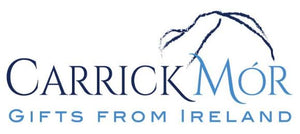Croagh Patrick


Croagh Patrick: Ireland’s Holy Mountain
Rising 764 meters above Clew Bay in County Mayo, Croagh Patrick — known locally as The Reek — is one of Ireland’s most iconic mountains. It is not only a place of breathtaking natural beauty, but also a deeply spiritual site, drawing thousands of pilgrims each year who follow in the footsteps of Saint Patrick, the patron saint of Ireland. At the summit, a small church stands as both a symbol of faith and a reminder of Ireland’s enduring Christian heritage.
The association of Croagh Patrick with Ireland’s patron saint dates back to the 5th century. According to tradition, Saint Patrick climbed the mountain and spent 40 days and 40 nights fasting and praying on its summit, in imitation of Christ’s fast in the desert. During this time, he prayed for the Irish people and dedicated the land to God.

Croagh Patrick had long been a site of pre-Christian rituals, especially the Lughnasadh festival, which celebrated the harvest and honored the sun god. Scholars suggest that Saint Patrick’s 40-day vigil may have been deliberately timed or situated to overlay the mountain’s existing sacred traditions, gradually transforming the site into a Christian pilgrimage while preserving its significance in the local consciousness. This blending of old and new ensured continuity of devotion while introducing Ireland’s Christian faith.
Every year, especially on Reek Sunday — the last Sunday in July — pilgrims climb the steep slopes of the mountain in acts of penance, devotion, and prayer. Some undertake the ascent barefoot, preserving an ancient tradition that emphasizes humility and sacrifice. The climb is demanding: rocky paths, loose scree, and sudden weather changes test the endurance of those who make the journey. Yet, despite the difficulty, pilgrims are rewarded with sweeping views of Clew Bay and its hundreds of small islands.

Pilgrims often pause at stations along the way to pray, recite the Rosary, or reflect silently. The climb thus becomes both a physical and spiritual journey, echoing Saint Patrick’s original 40-day vigil of fasting and prayer, while also touching a landscape imbued with centuries of sacred ritual.
At the top of Croagh Patrick stands a small white chapel, Teampall Phádraig (St. Patrick’s Church), built in 1905. Each year, Mass is celebrated here on Reek Sunday, with priests and pilgrims gathering in an atmosphere of reverence and solidarity. The chapel’s stark simplicity contrasts with the grandeur of the surrounding mountains and sea, yet it is a powerful reminder of the persistence of faith across centuries.

The church is also a symbol of continuity: it marks the summit as not just a natural peak but a sacred place of worship, recalling the prayers and fasting of Saint Patrick himself and the layers of devotion that predate him.
While its roots lie in ancient spiritual traditions, Croagh Patrick continues to draw modern pilgrims and hikers alike. For some, the climb is an act of religious devotion; for others, it is a cultural or personal challenge. Together, they share in a journey that connects Ireland’s past with its present. The mountain’s spiritual significance, combined with its natural majesty, ensures that Croagh Patrick remains one of Ireland’s most treasured landmarks.

Croagh Patrick is more than a mountain: it is a place of pilgrimage, memory, and faith. From Saint Patrick’s 40 days of fasting and prayer to the ancient Lughnasadh rituals and the barefoot pilgrims of today, the climb represents perseverance, devotion, and a search for meaning. The small church at its summit is a testament to the endurance of Ireland’s spiritual traditions — both Christian and pre-Christian — and to the timeless human desire to ascend, to seek, and to believe.



